Description
Genus: Boletellus
Species: pseudochrysenteroides
Common Name:
Tells: Red cap ages olive-brown, & gets deeply cracked/fissured. Yellow cap flesh blues & often tastes acidic. Yellow pores stain blue & resolve to brown.
Other Information: Lots of yellow mycelium at base of cap-colored stem (often w/yellow at the top). Quite a rare find.
Edibility: Unknown.
CHEMICAL TESTS:
- NH4OH (Ammonia): Cap surface turns orange or yellow, with a gray ring. Cap flesh turns orangish.
- KOH: Cap surface turns dull orange, with a gray or black ring. Cap flesh turns orange.
- FeSO4 (Iron Salts): Cap surface turns olive-gray to dark. Cap flesh turns yellow, gray or olive.
Links:
 |
0 |  |
0 |  |
86 |  |
80 |

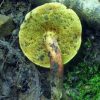
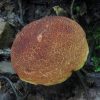
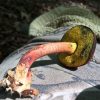

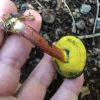
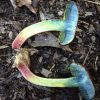
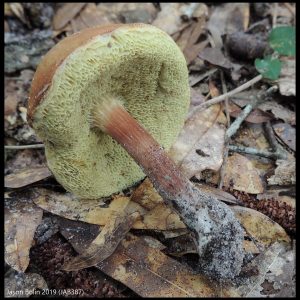

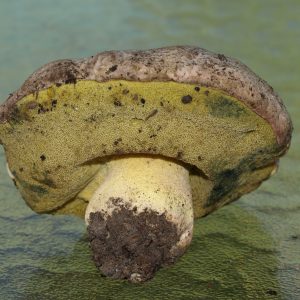
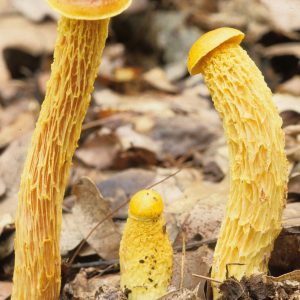
Got something to discuss?
What will happen if you eat it?
Hi Mitchell: “Unknown” means exactly that. And if the experts don’t know, I am certainly not going to stick my neck out and make some kind of half a$$ed guarantee! Especially not when we know how much Person A can differ from Person B. It is true that most boletes (other than the Rubroboleti and a few other exceptions) will range from safe to good to great if they aren’t bitter, so I’d say your odds are pretty darned good. But it is your mouth, your stomach, and your decision. Period. Consult the TOS for a more thorough and accurate response.
If you do decide to try it, please report back on your experience. I’d be curious to know whether it is good, bad or indifferent.
P.S. I’d suggest you triple check your ID because this particular species is supposed to be quite rare. Do you have any local experts to consult? If so, they would be excited about a find of this sort.
I found some of these in my yard underneath a large red maple tree in Charlotte, NC. The description checks out. The cap stains blue and it tastes quite acidic.
I did not eat it. The taste was not the greatest, and I have enough gas already.
I hope Mitchell made it.